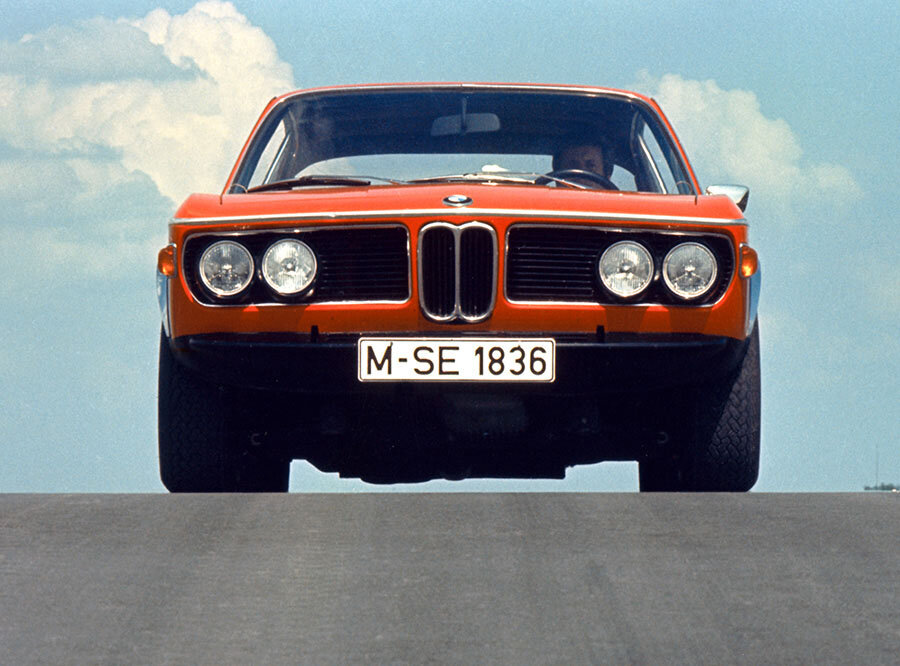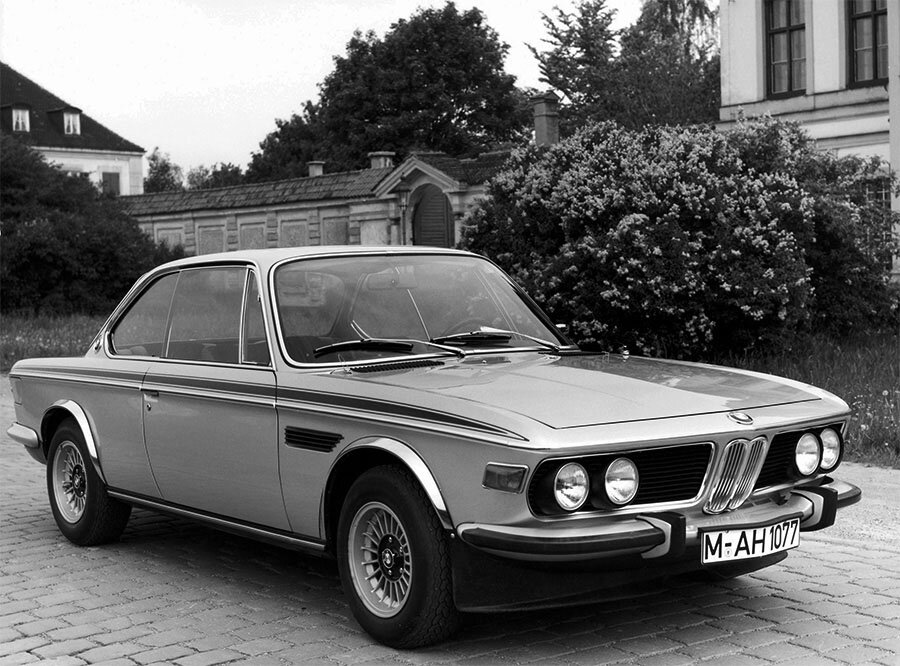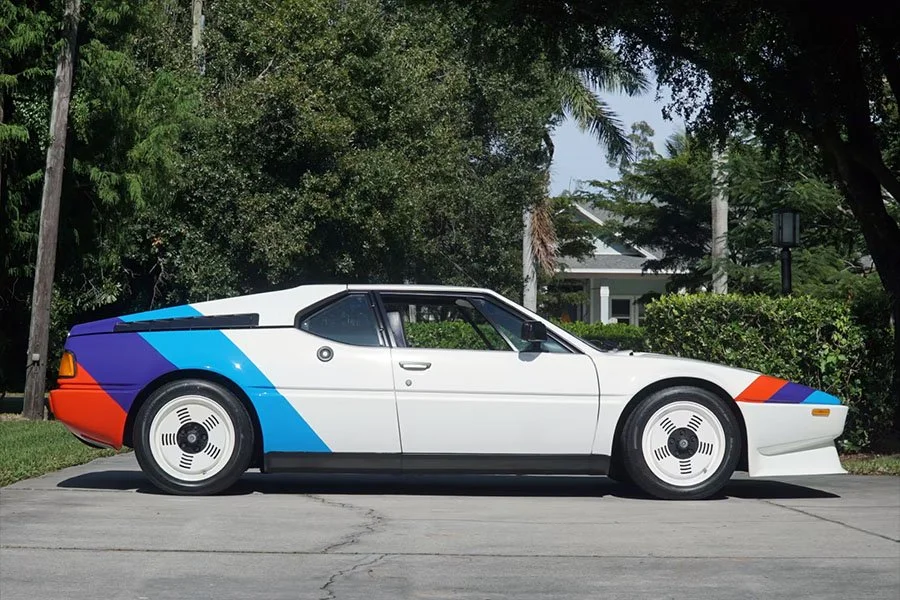Guide: BMW E9 3.0 CSL - a Historical & Technical Appraisal
/BACKGROUND
Ever since its inaugural 1963 season, the European Touring Car Championship (ETCC) had gone from strength to strength.
BMW participated in the ETCC between 1963 and 1966, first with the 700 and then the New Class range. That final year, the Bavarian firm collected the Division 3 championship with the 2000 TI.
After they sat out the transitional 1967 season, BMW returned to the ETCC for 1968 when Group 5 cars were permitted for the first time.
Group 5 was a class for Special Touring Cars that were modified far beyond the normal Group 1 and Group 2 categories.
In 1968, BMW used Group 5 2002 TIs with normally aspirated 210bhp engines and became champions in the premier Division 3 class.
For 1969, they introduced the turbocharged 290bhp 2002 TIK and won the top category for a second year in a row.
New regulations for the 1970 season outlawed specialised Group 5 cars like the turbocharged 2002.
Although BMW were officially absent for the 1970, 1971 and 1972 seasons, they did provide technical assistance to the Alpina and Schnitzer teams that ran E9 2800 CS Coupes in Division 3.
The low-key partnership was preparation for a full factory assault on the ETCC in 1973.
For the 1973 campaign, BMW made their biggest investment yet: in early 1971, BMW Motorsport GmbH was established to handle the factory’s racing efforts.
A specially enhanced version of the powerful E9 Coupe was then developed with a view to fully exploiting the Group 2 regulations.
To secure Group 2 homologation, 1000 examples of the new car would need to be constructed within a twelve month period.
BMW Motorsport’s new ETCC challenger was unveiled at the Geneva Motor Show in March 1971. The 3.0 CSL was a lightweight high performance version of the 3.0 CS Coupe. It would most notably take on the works Ford Capris that had largely cleaned up during BMW’s absence.
CHASSIS
3.0 CSLs were assembled at the Karmann factory in Rheine.
The unitary steel body shell and MacPherson strut / semi-trailing arm suspension layout was the same as all E9 Coupes.
CSL upgrades included Bilstein gas-pressurised dampers, progressive rate springs that were 20mm shorter than standard and increased camber (1.1° front, 1° rear).
CSLs did not come with anti-roll bars.
A slightly longer steering ratio was used. Power-assisted steering was only fitted when the City Pack option was specified.
CSL brakes were standard 272mm discs to all corners as per the CS model.
The new 7 x 14-inch light alloy wheels were supplied by Alpina. They originally came shod with Michelin XWX tyres.
ENGINE / TRANSMISSION
The first 169 CSLs (built at a slow rate between December 1971 and July 1972) were equipped with BMW’s standard Type M30 engine as found in the 3.0 CS.
This single overhead camshaft straight six featured a cast iron block and light alloy two valve head. It displaced 2985cc thanks to a bore and stroke of 89mm and 80mm respectively.
With a 9:1 compression ratio and dual Zenith 35/40 INAT carburettors, the Type M30 motor produced 178bhp at 6000rpm and 192lb-ft at 3700rpm.
BMW left it as late as possible to fulfil the CSL production requirement to avoid finalising the specification too early and ending up with an uncompetitive machine for the 1973 season. Ford were ploughing money into the Capri RS programme and developments were coming thick and fast.
Additionally, BMW had a fuel-injected version of the Type M30 engine in the pipeline and, in March 1972, the 3.0 CSi replaced the 3.0 CS.
BMW Motorsport wanted the fuel-injected engine for the CSL and went on to develop their own enlarged version of it.
By taking the injected motor out to just over 3000cc, the CSL would be able to race in the over three-litre category where there was no limit on engine capacity; it was thought a future 3.5-litre lump in the race car would almost certainly prove sufficient to outperform Ford.
The CSL road car’s engine was bored from 89mm to 89.25mm. Displacement rose by 18cc to 3003cc.
Compression was kept at 9.5:1 as per the standard CSi. The original Zenith carbs were replaced with an electronic Bosch fuel-injection system.
Peak output rose from 178bhp at 6000rpm to 200bhp at 5500rpm. There was also a useful torque gain with 204lb-ft now on top at 4300rpm.
With the bigger fuel-injected engine ready, all the CSL components were finally in place.
From September 1972, BMW got serious about completing the 1000 cars required for homologation and manufactured the outstanding units.
All CSLs were equipped with the same Getrag four-speed manual gearbox found in the other three-litre E9 Coupes. Gear ratios were unchanged but the rear axle ratio was switched from 3.45:1 to 3.25:1 for the fuel-injected derivative.
As with the production CS and CSi, a limited-slip differential was standard.
BODYWORK
Cosmetically, the CSL was enhanced with a number of special parts.
To save weight, the bonnet, doors and boot lid were aluminium instead of steel. The bonnet also had a simple pin-release opening mechanism.
Parts like the front bumper, boot lock and tool kit were deleted.
A lightweight fibreglass bumper was installed at the rear along with chrome wheelarch extensions all round.
The CSL also came with a special laminated windscreen plus thinner side glass. The rear three quarter windows were now fixed in position and did not open.
The final touch was a black stripe with integrated 3.0 CSL logo down each flank.
BMW’s standard E9 Coupe was already a handsome enough machine but the CSL’s visual upgrades ensured it was easily the best looking car in the BMW range.
INTERIOR
Like the bodywork, the CSL’s interior was refined and well designed.
It featured a variety of special parts to include Scheel bucket front seats (upholstered with leatherette bolsters and fabric centres), a small diameter three-spoke leather rimmed steering wheel and simple black roof lining.
To save weight, most of the sound insulation was ditched along with all of the underseal and much of the boot trim.
Unlike some cars in its class, the E9 was a full four seat Coupe and not a 2+2. The high roofline and individually contoured rear bucket seats could accommodate most adults in total comfort.
Back seats were retained for the CSL along with many other interior appointments as they were required by Group 2 Touring Car regulations at the time.
Instrumentation comprised four gauges: a large speedometer and rev counter flanked to the right by a clock and to the left by a combined fuel / water temperature read out (which also housed several warning lights).
All four gauges were located directly behind the steering wheel in a simple curved binnacle that was neatly integrated with the rest of the dash.
Wooden inserts were fitted to the dash, instrument fascia, centre console and the tops of the doors / side panels.
WEIGHT / PERFORMANCE
Thanks to the extensive weight-saving programme, 3.0 CSLs tipped the scales at 1165kg. This was 210kg less than the standard 3.0 CS / CSi.
Quoted performance figures were a top speed of 140mph and 0-62mph time of 6.5 seconds.
OPTIONAL CITY PACK
For those customers who wanted the ultimate road-going BMW but with most of the luxuries reinstated and a more practical specification for road use, an optional City Pack was available.
The City Pack included power steering, a heated rear window, additional sound deadening, velour carpet, a normal locking bonnet and boot lid and a full toolkit.
Standard front and rear bumpers were also part of the City Pack as was a fully undersealed chassis.
The CSL’s laminated windscreen and lightweight side glass were switched to standard glass. The rear side windows now opened.
Standard CS/CSi suspension settings were adopted including the re-fitting of anti-rolls bars (absent on the CSL).
Perhaps most significantly, City Pack CSLs were also fitted with bonnets, doors and boot lids fabricated from steel.
Overall, the City Pack resulted in an additional 135kg of equipment being re-instated.
PRODUCTION
CSL production began in December 1971 and stopped in July 1972 when the original carb-fed 2985cc derivative was dropped.
Production re-started in September 1972 with the fuel-injected 3003cc variant. Unlike the original, this was available in both left and right-hand drive.
Most right-hand drive CSLs were ordered by the British importer with the City Pack.
Production of right-hand drive CSLs lasted until January 1973 while left-hand drive production continued until June 1973.
The all-important 1000th car required for Group 2 homologation was completed in late November of 1972.
1098 were built in total. This comprised 169 left-hand drive carb-fed cars and 929 fuel-injected cars (500 of which were right-hand drive).
Original carb-fed CSL chassis numbers fell within the normal 3.0 CS VIN range.
Fuel-injected CSLs had a unique model code and chassis number sequence (2275001 to 2275429 for LHD and 2285001 to 2285500 for RHD).
3.2 CSL
To homologate a fresh batch of parts deemed essential for the racing programme, an additional 167 CSLs were subsequently built between July 1973 and October 1975.
These further evolved CSLs (covered separately).most notably came with an enlarged 3.2-litre engine and elaborate aero kit.
Text copyright: Supercar Nostalgia
Photo copyright: BMW - https://www.bmw.com
































